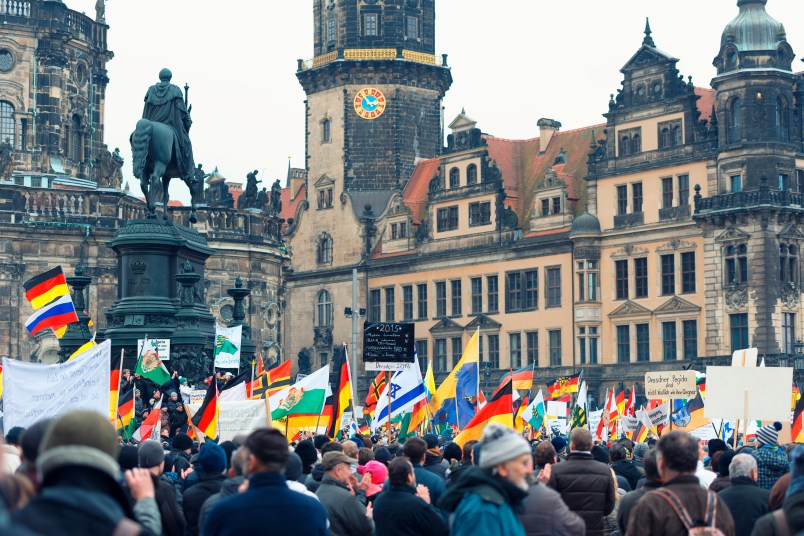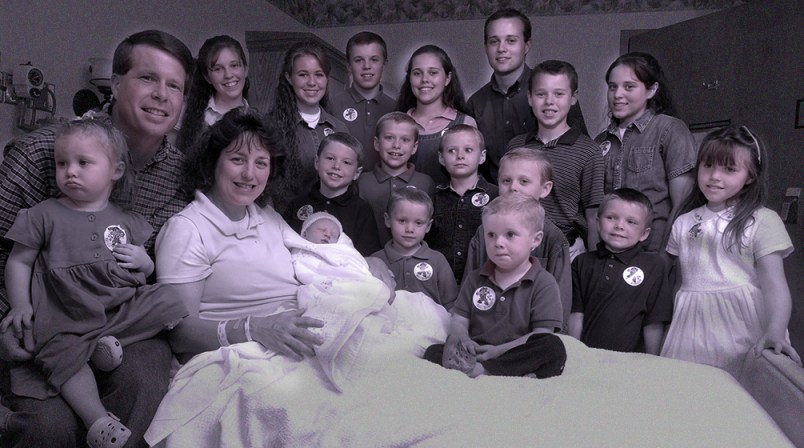There’s a joke among American Jews in Germany that once you’ve exposed yourself as Jewish, sooner or later someone’s going to mention Klezmer.
Statistically, most Germans have never met a Jew, and they have most likely never thought about what they would say to one. So in a misguided attempt to sympathize with a group of people their grandparents may have wronged, many Germans give in to the myth that to understand Jewish culture is to understand Jews. At the center of their version of Jewish culture, for whatever reason, is Klezmer music. No matter how well-meaning their interest, if you’re a Jew it will leave you with the feeling that the misunderstanding was somehow yours. Were you in fact meant to be highly informed on the intricacies of this musical genre?
In August of last year, a reporter called to interview me for a Religion News story. Weeks of fighting between Israel and Hamas had stirred up tensions far beyond Israel’s borders. Marches in Europe intended to express solidarity for Palestine and disgust at Israel’s actions had, unsurprisingly, descended into anti-Semitism. Jews were leaving France for Israel in numbers that would top 7,000 by year’s end. Did I feel the same sense of urgency as a Jew living in Berlin—that somehow, I was no longer safe here?
That’s when I had my own Klezmer moment: No one had informed me I was supposed to be worried.
Now, for the past two months, Pegida, a weekly anti-Islam march of thousands originating in Dresden and spreading throughout Germany, has dominated headlines here. Pegida stands for “Patriotic Europeans Against Islamization of the West.” It has inspired, among many, the Berlin-based Bärgida, whose name attempts cuteness by referencing the Berlin bear (Bär) mascot, and the almost laughable Pegada, the “a” in the middle standing for “Americanization” instead of “Islamization.” They’re all united by the fear that immigrants will take away German jobs, erode German culture and become a strain on the country’s resources, neatly echoing the prevailing rightwing sentiment towards illegal immigrants in America.
After the Charlie Hebdo massacre in Paris last month, news outlets like Slate predicted a reactionary swell in Pegida’s ranks. For a while, to those of us looking on as Pegida gained ground, things didn’t look too good: After all, Dresden is the capital of Saxony, previously one of the East German states and now home to Germany’s largest and most active neo-Nazi network.
Yet the numbers have painted a confusing picture of the region, showing a group of people infuriated by Muslim influence even as very few Muslims live in their midst. The Slate article referenced a new Bertelsmann Stiftung study of Muslims in Germany. Among its findings: Dresden, birthplace of the Pegida movement, has Germany’s lowest concentration of immigrants: 0.1 percent.
It should come as no surprise that the people heading these marches have a loose grip on reality; on Jan. 21, the movement’s leader Lutz Bachmann resigned after photographs of him posing as Hitler surfaced. Now that several other leaders have followed suit, including Pegida spokeswoman Kathrin Oertel, it looks as if the end might very well be nigh for their ill-conceived movement. In the end, all it took to prompt members of Pegida to scatter was one tiny, tiny mustache: Obviously those who have joined the marches stand for rightwing values…they just don’t want to look like they stand for those kinds of rightwing values.
Pegida may be in disarray, but the media firestorm rages on, capped off by a State Department warning posted online. The zeal with which American media outlets promote the idea that Europe’s Jews are in danger stirs up anxiety and controversy where they need not exist. Behind the frenzy lies a certain smugness on the part of non-European Jews, who seem to think this was all inevitable and are all too happy to report they were right. Newsweek’s tasteless July 29, 2014 cover accompanying the article “Exodus: Why Europe’s Jews are fleeing once again” should share a portion of the blame. But instead of giving in to the instinctual horror that such an image and headline are meant to invoke, we should take a look at the facts.
For one thing, the spread of far-right nationalist parties seems to be a constant fear. They have sprung up in Greece, Hungary and Switzerland, but that does not necessarily mean the same thing will happen in Germany. Indeed, while the ascendance of parties like Golden Dawn in Greece and Jobbik in Hungary more or less coincided with the 2008 financial crisis, capitalizing on the resulting unease in Europe, Germany has been keeping a decades-long watch over its own far-right political party, called the German National Democratic Party (NPD or Nationaldemokratische Partei Deutschlands). Founded in 1964 as an offshoot of the postwar German Reich Party, the NPD enjoys the most popularity in what was once East Germany, parts of which continue to suffer from a languishing economy 25 years after the fall of the Berlin Wall.

Although an initiative to ban the NPD comes up every few years in German parliament, there’s a general consensus that it’s better to keep the party legal, thereby allowing members to operate in the open. This is not an attempt to legalize hatred, but rather a demonstration of good faith. Americans used to free speech, no matter how hateful, may be shocked to learn that swastikas are banned in Germany, and anyone performing the “Heil Hitler” salute in public is subject to arrest. Let the political parties do what they will, elected officials seem to say, and let the German people decide. Most Germans continue to decide that the NPD is hardly worth paying attention to.
Influential media outlets also peddle the myth that recent incidents like those in France prove the Jews have no future in Europe and are only safe in Israel. A recent Washington Post article quoted Israel’s former finance minister Yair Lapid: “European Jewry must understand that there is just one place for Jews, and that is the state of Israel.” Although convincing Jews from other parts of the world—which Israel often refers to as “diaspora Jews”—to emigrate is not only part of Israel’s mission but also absolutely integral to its survival, scare tactics are hardly the best way to go about this.
Lapid’s words aren’t just insulting to the millions of Jews who have found homes outside of Israel, they’re blatantly untrue, judging by the thousands of Lapid’s own countrymen who are moving to Berlin. In a 2013 speech in front of the World Jewish Congress, Dr. Charlotte Knobloch, former President of the Central Council of Jews in Germany and a Holocaust survivor, commented on what she saw as a remarkable turning point in Jewish-German relations: “The country is today once again—and I say this with profound conviction—a good homeland for Jews.” In contrast to the well-worn German phrase describing postwar Jews as “sitting on packed bags” (auf gepackten Koffern sitzen), many of today’s Jews dream of nothing less than packing their bags for Germany, where they are often able to regain citizenship.
Skittish journalists are also too quick to fall back on memories of the Holocaust, claiming that the rise of Pegida points to a possible repetition of the events of the 1930s and forties. This is a patently false comparison. While those atrocities were entirely sanctioned by the government, today’s events are roundly condemned by those in power. In her traditional New Year’s speech, German chancellor Angela Merkel criticized Pegida, warning Germans: “Do not follow them; too often their hearts are cold, full of prejudice, and yes, even hate.”
French President François Hollande condemned the killing of four hostages at a kosher supermarket a day after Charlie Hebdo, calling it “an appalling anti-Semitic act.” These two leaders may not be able to stop acts of terrible hatred from being committed on their soil, but their words clearly state which side they are on.
In other words, we’re a long way from Kristallnacht, 2015. Every time an event in the past five years has smacked of extremism in Germany, the same thing happens: There’s some hand-wringing from Jewish and liberal leaders, the government finds a compromise, and everyone settles down to await the next controversy. It happened in 2012, when a local court in Germany angered many by banning circumcision. Three months later, it was legalized once again, after an outcry from both Muslim and Jewish leaders. Among them was a disappointed Dr. Knobloch, who wrote a scathing editorial for the Süddeutsche Zeitung titled, “Wollt ihr uns Juden noch?” or “Do you still want us Jews?”
Of course, the danger of growing nationalism in Europe is real, but these days, it is less often directed towards Jews. On Jan. 7 in France, Jews were the victims of an attack not by ultra-right nationalists but by Islamist extremists—and they were by no means the only targets. Meanwhile, rightwing agitators in Germany seem to have turned their attention elsewhere, proving another joke among Jews in Germany true: that neo-Nazis wouldn’t know a Jew if they saw one.
Pegida is unlikely to be the last of these movements; intolerance, civil unrest and unease about the future are as prevalent in Europe as they are in America. But if we can debunk some of the myths that fueled this particular media craze, we can better understand why we are attracted to these types of stories in the first place. That way, when the next one comes along, perhaps we won’t be so quick to leap to conclusions about what it means for the future of Jews, Muslims, or any other minority group in Europe.
Giulia Pines is a New York-born, Berlin-based freelance writer and translator with an interest in politics, culture, and travel. Her previous work has appeared in The Atlantic CityLab, Fodor’s, Jacobin, Kinfolk, Vice, and Slow Travel Berlin.






